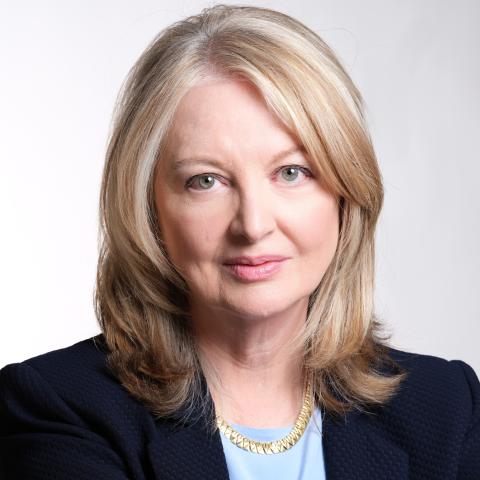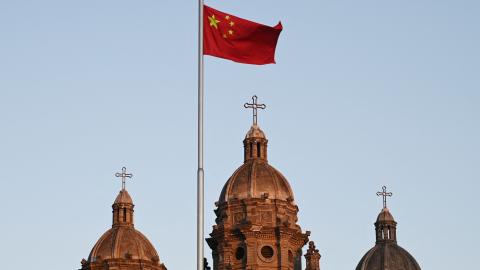Executive Summary
This report shows that religious repression of the Catholic Church in China has intensified since the 2018 China-Vatican agreement on the appointment of bishops. It identifies and discusses the ongoing cases of 10 Vatican-approved Catholic bishops in China whose persecution has continued or worsened since September 2018. The suppression of the ministries of a significant part of that church’s faithful leadership also denies religious freedom to millions of Chinese Catholic faithful. It represents a repression of the Chinese Catholic Church at large.
The Chinese government’s persecution of the Chinese Catholic Church is targeted against the hierarchs who resist Chinese Communist Party control over religious matters. For this reason, the CCP has subjected the 10 bishops in the report to indefinite detention without due process, disappearances, open-ended security police investigations, banishments from their dioceses, or other impediments to their episcopal ministries including threats, surveillance, interrogation, and so-called reeducation. Seven of these bishops have been detained without due process, with some of them having been under continuous detention for years or decades, while others have been detained repeatedly, up to six times since the agreement’s signing. This report does not include persecuted bishops who have died over the last six years or bishops on whom there is little information. Other persecuted Catholics, including priests, other religious leaders, and laity, are also not covered.
Beijing targeted these 10 bishops after they opposed the Chinese Patriotic Catholic Association (CPCA), which requires its members to pledge independence from the Holy See. China has been trying to sever the Catholic Church in China from the pope since the 1950s, when the Chinese Communist Party expelled the papal envoy and imprisoned Shanghai’s Cardinal Ignatius Kung for 30 years after he refused to renounce papal authority. For their conscientious objection to the CPCA, several currently persecuted bishops on this list also suffered lengthy imprisonment and torture during the early decades of CCP rule. Since the 1990s, Beijing has employed more covert and less bloody measures against noncompliant Catholic bishops to evade Western criticism and sanctions.
The CPCA was established within the Chinese bureaucracy in 1957. It came under the direct control of the CCP’s propaganda section, the United Front Work Department, in 2018. The Vatican has never recognized the association as legitimate. In a 2007 papal letter to the Chinese Catholic Church, Pope Benedict XVI established principles that address the issues with the CPCA and its affiliate, the Chinese Catholic Council of Bishops, which was established in 1980. He stated that “the declared purpose of the aforementioned agencies to implement ‘the principles of independence and autonomy, self-management and democratic administration of the Church’ is incompatible with Catholic doctrine.”1 But Beijing began increasing pressure on bishops to join the association immediately after China and the Vatican signed the 2018 agreement. The Holy See then issued guidelines in 2019 clarifying that the Vatican permits conscientious objection to the CPCA while accepting membership as the new normal.
The CPCA, by submitting its members to lifelong surveillance and indoctrination, ensures compliance with the government’s new, strictly enforced Sinicization of religion rules—such as keeping children out of churches, basing sermons on Xi Jinping Thought, and reinterpreting the Bible according to party values. The nine mainland bishops on this report’s list rejected CPCA membership as conscientious objectors. Seven of them have been in detention without due process for years. One bishop on the list is from Hong Kong, a historically semi-autonomous region that is not subject to CPCA jurisdiction. This bishop, Cardinal Joseph Zen, had been a prominent critic of the association.
Since Beijing officially announced the Sinicization policy in 2015, which impacts all faith traditions, the Chinese Catholic Church has seen its greatest repression since the Mao Zedong era. The China-Vatican agreement makes no accommodation for the conscientious objectors to the CPCA, who are often called the underground church. Nor does the agreement address religious persecution. The Vatican states that the pact, the contents of which are secret, is narrowly focused on a power-sharing arrangement for episcopal appointments. Yet Beijing has used it to pressure Catholic bishops into joining the CPCA.
The Vatican backs the agreement with Beijing because the Holy See is anxious to fill some 30 episcopal seats, about a third of China’s Catholic dioceses, that the officially atheistic CCP has kept vacant. Since the agreement, these episcopal appointments have been slow in coming; about 10 have been made so far. Beijing has unilaterally announced several of these appointments, including an episcopal transfer to the important Shanghai Diocese, in an apparent violation of the China-Vatican agreement. For the sake of Chinese Catholic Church “unity,” Pope Francis approved these appointments after the fact. But Beijing’s persecution of the 10 bishops in this report is the real threat to the Catholic Church’s unity.
Without a faithful Catholic underground, the 400-year-old Chinese Catholic Church faces an unprecedented challenge in forming the next generation of faithful Chinese bishops. The Holy See is in a race against time to shore up its ties with the bishops within the CPCA before the Chinese episcopacy becomes wholly indistinguishable from the rest of the United Front Work Department. Pope Francis has made repeated requests to visit China, which Beijing has ignored. Holy See negotiators have sought in vain to establish a diplomatic office or some other stable mainland presence. The Vatican expressed hope that it could create a bridge between itself and the mainland Chinese Catholic Church when, in 2022, the CPCA initiated direct relations with Hong Kong’s Jesuit Cardinal Stephen Chow. But it was inauspicious that the first meeting centered on enlisting the diocese in the CPCA’s project of reinterpreting the Bible to align with Chinese communism.2
In over 30 years of dialogue with China, the Vatican has kept silent or publicly downplayed China’s denials of religious freedom. This resembles the Holy See’s no-criticism policy of Ostpolitik toward Eastern European Communism. Religious freedom and human rights, however, play an important role in American foreign policy, and for this reason it is important for the United States government to recognize that China’s Catholic Church, as with all religious minorities in China, is repressed, though the methods vary. It is apparent that the CCP aims to suppress all religions—including Christianity—and replace them with the dogma, values, and images of the party.
American policymakers and public figures should recognize Beijing’s tactics against the Catholic Church in China for the religious repression it is. Below are seven steps that should be United States policy:
- The next president should use the bully pulpit to highlight the suffering of these 10 persecuted bishops. This would bring more attention to their cases and could help protect them from further abuse and restrictions. The president should follow the example of President Ronald Reagan, who frequently raised the names of the persecuted in the Soviet Union, personally intervened with Soviet Premier Mikhail Gorbachev on behalf of prisoners of conscience, and met with their family members when possible. Jewish refusenik Natan Sharansky, Lithuanian Catholic cleric Father Alfonsas Svarinkas, and Russian Orthodox priest Vasili Shipilov are among those who credit Reagan with freeing them and saving their lives. The president should give a major address to the American people about China’s religious repression against Catholics as well as other Christians, Turkic Muslims, Tibetan Buddhists, and Falun Gong.
- The secretary of state should raise these bishops’ cases and other religious freedom concerns in every bilateral meeting with China. The State Department International Religious Freedom Office’s annual reports should include religious persecution against these bishops and others in the Catholic Church in China. The American embassy in China should seek meetings with the seven detained bishops on the report’s list and visit their dioceses. US statements before the United Nations General Assembly, Security Council, and Human Rights Council should regularly raise the issue of China’s religious persecution and share details on Beijing’s treatment of these 10 Catholic leaders.
- Radio Free Asia and Voice of America should provide frequent Chinese-language information on these 10 cases of persecution, as well as on persecuted members of other Chinese religious and spiritual groups. These services should also find other ways to disseminate this information digitally inside China. This information should also be translated into other languages and disseminated worldwide. As the United States competes with China for allies and trading partners, it should make better known the ugly coercion undergirding the CCP’s political system. American broadcasting played a crucial role in this regard during the Cold War. In China, only the CCP’s version of history is permitted, and the party routinely conceals its human rights violations. Therefore, the US should disclose the facts and shed light on religious persecution, including of Catholic bishops.
- The State and Treasury Departments should impose Magnitsky sanctions against the CCP and security officials responsible for detaining without due process the bishops detailed in this report.
- The Justice Department should continue to prosecute Chinese agents who interfere with religious freedom on US soil. In one case, the Federal Bureau of Investigations identified a Chinese spy who was fraudulently acting as a Catholic priest in the Church of the Transfiguration in the New York Archdiocese.3 In another case, the Justice Department brought charges against Chinese agents who threatened violence against a Christian pastor running for Congress.4 The department should publish a report on the status and disposition of each of its cases involving the harassment by Chinese agents of Catholics, Protestants, Falun Gong, Uyghur Muslims, and Tibetan Buddhists within the United States.
- The next president should issue an executive order that prioritizes advancing religious freedom in China. And the White House should include advancing religious freedom in China as a priority in the next National Security Strategy.
- The next president should issue an executive order to ban all public and private American cooperation with and support for China’s organ transplant sector. In 2021, 12 UN human rights experts asserted that they had received credible evidence of forced organ harvesting in China that targets all religious minority groups.5















